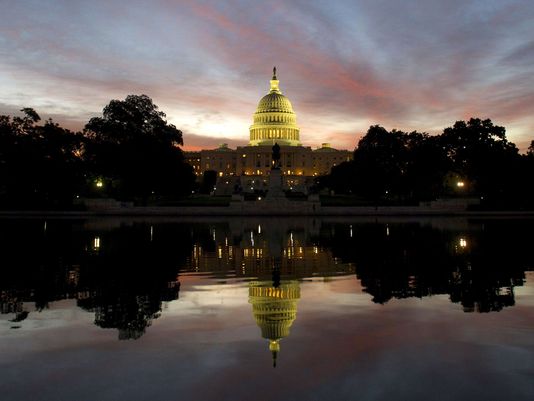If government shuts down, economy would feel it
If the federal government shuts down next week, the economic impact would be small at first but grow quickly.
A partial shutdown would cut the economy's annual growth rate in the fourth quarter by 0.2 percentage points, to 2.5%, even if it ended in three or four days, Moody's Analytics chief economist Mark Zandi told the Senate Budget Committee Tuesday.
A three-to-four week impasse could reduce growth by 1.4 percentage points — effectively cutting the economy's expected growth rate by half or more. About half of civilian government workers wouldn't be able to go to work, and their lost pay would represent about half of the short-term economic impact, Zandi estimated.
"Shutting the government down for three or four weeks would do significant economic damage,'' Zandi said. "Any interruption longer than a month would cause GDP to fall for the quarter, and one longer than two months would likely precipitate another recession.''
With Congress coming down to the wire on whether to fund the federal government after its fiscal year ends Sept. 30, non-essential government functions could begin a partial shutdown on Oct. 1. Entitlements such as Social Security and food-stamp benefits would continue to be paid, and most military functions would continue, but furloughs for non-essential workers would begin almost immediately, says the Congressional Research Service.
The worst-case scenario would be if Congress failed to raise the debt ceiling, a separate decision from approving a funding bill, which could trigger a first-ever default by the U.S. government. Treasury Secretary Jack Lew wrote to Congressional leaders on Wednesday, saying the government will exhaust its borrowing authority under current law by Oct. 17.
"The debt limit impasse that took place in 2011 caused significant harm to the economy and a downgrade to the credit rating of the United States,'' Lew wrote. "If Congress were to repeat that brinksmanship in 2013, it could inflict even greater harm on the economy. And if the government should ultimately become unable to pay all of its bills, the results could be catastrophic.''
The best guides to what might happen are the government shutdowns of 1995-1996, said Chad Stone, chief economist of the Center on Budget and Policy Priorities.
The 1995-1996 government shutdowns, a five-day hiatus in November 1995, followed by a 28-day gap in December and January 1996, did interrupt the strong expansion that was then developing.
The economy grew at an annual pace of 3.5% in the third quarter of 1995, but dropped to 2.9% in late 1995 and 2.6% in the first quarter of 1996. Once the shutdown ended, growth rebounded to 7.2% in the second quarter of 1996, and the economy grew at a 4% clip in the second half of the year.
During the crisis, interest rates on 10-year Treasury bonds dropped, and the Standard & Poor's 500-stock index rose 5.5%. Unemployment stayed stable, 5.5% or 5.6% from September through January.
The impact of a failure to raise the debt ceiling could be much greater, because of the way it would rock credit markets, said Doug Holtz-Eakin, a former head of the Congressional Budget Office.
It would also force much more sudden spending cuts than a partial shutdown if the Treasury is forced to go from a $600 billion annual deficit to balancing income and payments immediately, Stone said.
"It's sequestration on steroids, a balanced budget amendment enforced on an hourly basis,'' he said.










